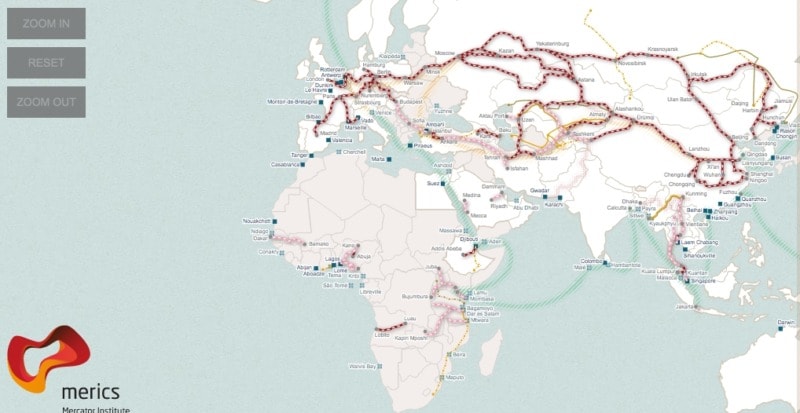
When China’s party and state leader Xi Jinping first announced his plan for a “Silk Road Economic Belt” and “21st Century Maritime Silk Road” in the fall of 2013, the concept sounded vague and its content was difficult to interpret. While this remains true in many respects, the “Belt and Road Initiative (BRI),” as the overall policy is now called, has since been fleshed out somewhat in two policy documents. In these documents, the Chinese authorities define broad and very ambitious goals: Beijing wants to connect participating countries’ infrastructure, but also encourage them to open their markets to China and facilitate trade, to link their financial markets to China’s, to strengthen societal (“people-to-people”) relations, and even align their overall economic development policies with China’s. Projects on the ground are the best indicator for how Beijing aims to achieve these goals.
Since the launch of the project, China has invested more than 100 billion USD into BRI-related infrastructure projects according to the MERICS BRI database. Not included are projects still under construction or in the planning phase, which involve much larger […]











I have read a bit about the BRI. It seems a brilliant way to foster economic activity and develop trade. PRC also has invested heavily in development projects in the Western Hemisphere as well, particularly in certain South American countries and Caribbean islands. A common complaint I hear though is that PRC awards all the work to PRC firms, and
the work is performed by Chinese laborers. So the local economic impact of the development projects is practically nothing. And these projects are not “gifts”. While the terms are generous, the Host countries become indebted to PRC. At the same time PRC is also destroying habit and constructing forward military bases on islands and atolls across the South China Sea. And building up a large navy and amphibious capabilities. Maybe to conquer Taiwan, and maybe others? Nixon invited China into the family of nations in the early 1970’s. He was probably hoping injecting capitalism would benefit the Chinese masses living in poverty and oppression, and offer them a path to prosperity and hopefully freedom. Instead PRC has masterfully twisted economic development into a way to further their authoritarian political system while enriching party members and loyalists, while squashing opposition.
China has played the long game for decades. Americans, on the other hand were dumb enough to elect Trump and his America Only philosophy. It is China that will write history.
Sounds like PRC has something like their own PRC 1st (version of “America First”) doesn’t it? I think PRK is just used to USA caving in to them … and Biden is right back at it! SVS that has NOT worked!
China has played the long game for a very long time something like four to five thousand years. The last 150 years or so have been very unkind until about twenty years ago when they have come roaring back rebuilding for modern times the “center of the universe”.
History repeats, more or less, with various empires rising until hubris, a universal human characteristic, takes over then decline/collapse follows. China has had many recorded examples of advanced inventions, art, ceramics, medical advances, weapons, philosophies then chaos and collapse.
China has much to offer the world unfortunately Emperor Xi is leading the nation into a dark high-tech totalitarian dead end. Climate change and extreme environmental degradation may be the corrective to Xi world.